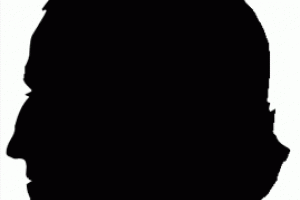Go To Section
LANGHAM, John (1584-1671), of Crosby Place, Bishopsgate, London and Cottesbrooke, Northants.
Available from Boydell and Brewer
Family and Education
bap. 20 Apr. 1584, 1st s. of Edward Langham of Guilsborough by Anne, da. of John West, yeoman, of Cotton End, Hardingstone. m. c.1620 (with £3,000), Mary (d. 8 Apr. 1652), da. of James Bunce† of Gracechurch Street, London, 6s. (3 d.v.p.) 5da. suc. fa. 1607; kntd. 16 May 1660; cr. Bt. 7 June 1660.1
Offices Held
Asst. Levant Co. 1621-32, 1634-8, treas. 1632-4, gov. 1654; member, Hon. Artillery Co. 1621; committee, E.I. Co. 1626-7, 1628-42, asst. Grocers’ Co. 1632. sheriff, London 1642-3, alderman 1642-9, 4-18 Sept. 1660, commr. for militia 1645, 1647, assessment, Northants. 1657, Jan. 1660, London and Northants. Aug. 1660-1, London 1668-9, oyer and terminer, London July 1660.2
Capt. of ft. (parliamentary) 1642-3, col. 1643-5.
Commr. for excise 1643; trustee for bishops’ lands 1646.3
Biography
Langham, the grandson of a Northamptonshire yeoman, was apprenticed to Sir Richard Napier, a Turkey merchant, in whose service he spent many years in the Near East. On his return he became a prominent member of the Levant and East India Companies. One of the wealthiest London merchants of his day, he bought the manor of Cottesbrooke in 1639. A staunch Presbyterian, he commanded one of the London train-band regiments in the Civil War; but he was imprisoned in the Tower in 1647 as an opponent of the New Model Army, and furnished money for royalist conspiracy under the Commonwealth. He represented London under the Protectorate, the first of his family to sit.4
Langham was associated with the City group, headed by Richard Browne I and John Robinson I, which paved the way for the Restoration. He was returned for Southwark at the general election of 1660, apparently unopposed, and classed as a friend by Lord Wharton. In May he helped to draft the assessment ordinance and to raise two loans in the City, for which he received the thanks of the House. He also subscribed £5,310 out of the £50,000 to be presented to the King at The Hague, where he was knighted as one of the delegation that brought the City’s answer to the Declaration of Breda. He advanced a further £10,000 towards paying off the navy, and on 13 Aug. he was appointed to the committee to raise £100,000 in the City. But he was granted leave of absence four days later, and took no further part in the Convention. The King ordered him to be restored as alderman, but he was discharged in consideration of his age and infirmity, and also excused from acting as one of the treasurers of the poll bill. He did not stand in 1661, though a poll was demanded at Southwark on his behalf, probably without his consent. He never conformed, and employed dissenting chaplains at Crosby Place. He died on 16 May 1671 and was buried at Cottesbrooke.5
Ref Volumes: 1660-1690
Authors: M. W. Helms / Eveline Cruickshanks
Notes
- 1. VCH Northants. Fams. 215-18.
- 2. J. R. Woodhead, Rulers of London, 105; Ancient Vellum Bk. ed. Raikes, 33.
- 3. List of London Militia (1642).
- 4. V. Pearl, London and the Outbreak of the Puritan Revolution, 321-3; R. Sharpe, London and the Kingdom, ii. 266, 273, 308; HMC Portland, i. 585.
- 5. D. Underdown, Royalist Conspiracy, 299; CJ, viii. 127, 280; CSP Dom. 1661-2, p. 601; D. R. Lacey, Dissent and Parl. Pols. 417-18.

